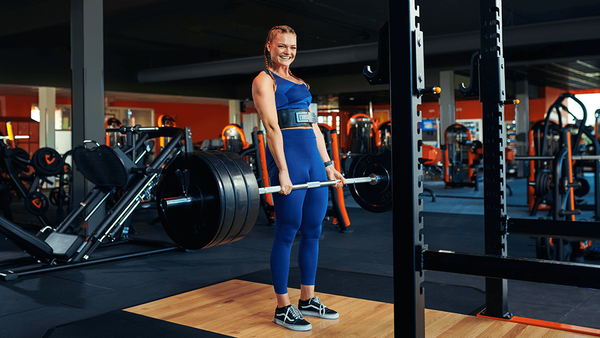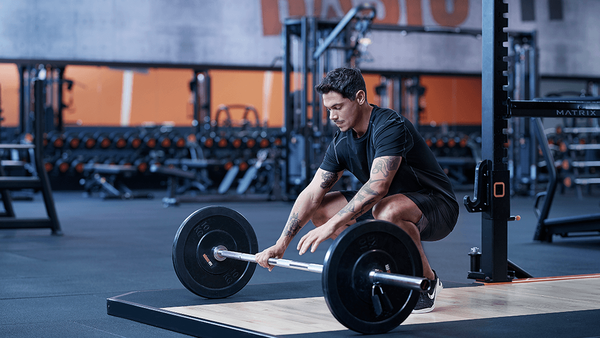How you train shapes how you move, whether you're building up to a race, getting stronger at the gym, or finding your rhythm with home workouts. These next tips will help you improve your overall fitness with more strength, control, and consistency.
Want guidance as you go? The Basic-Fit app gives you ready-to-follow workouts, strength training plans, and tips from pro trainers for both gym and at-home sessions.
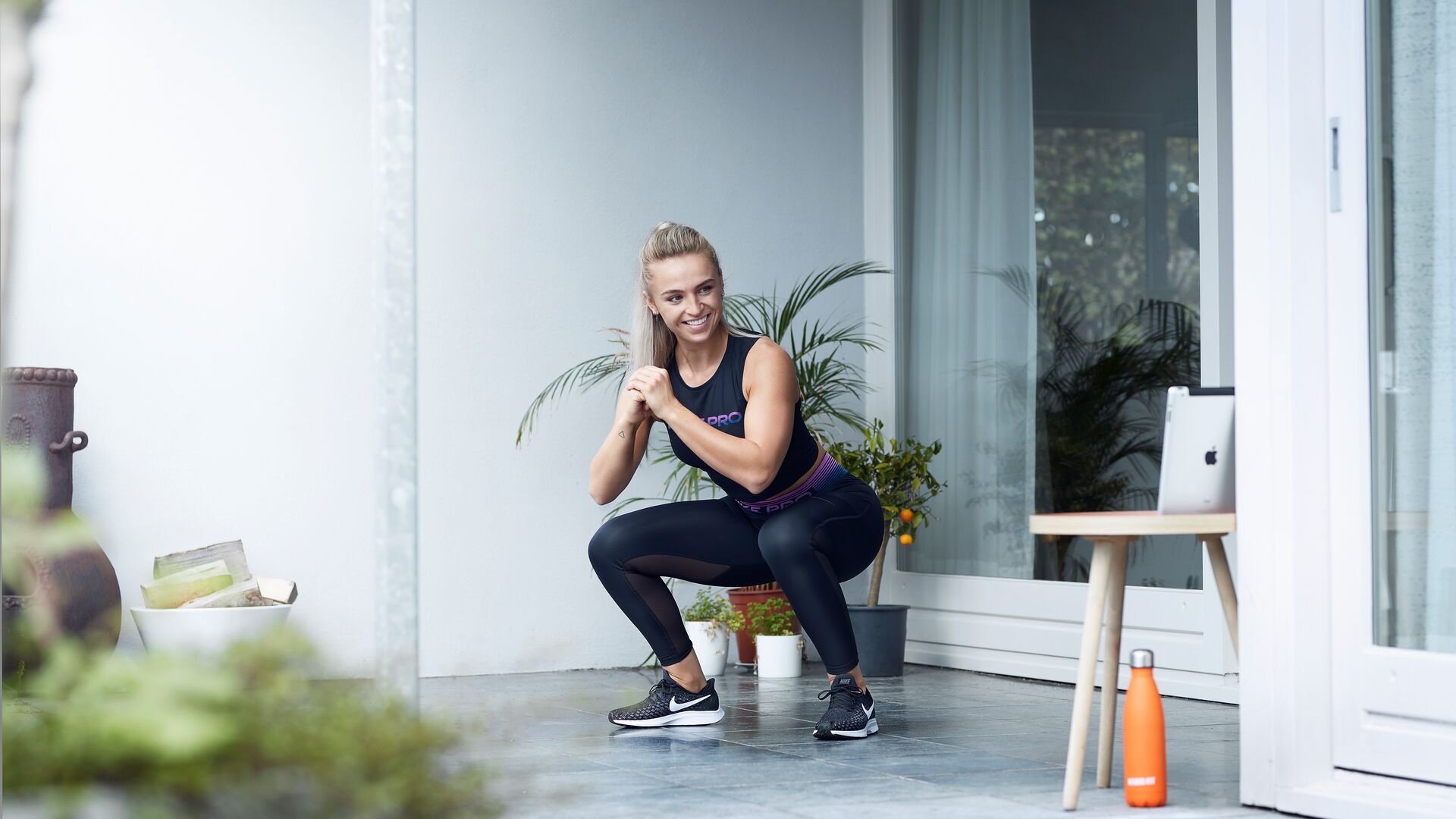
Strong legs = a stronger you
Power starts in your lower body. When your glutes, hamstrings and calves are strong, you move more efficiently, feel more stable, and reduce your risk of injury, especially during longer or more intense workouts.
Here's how to build that strength:
- Lunges with a pause (3 x 10–12 per leg)
Step one foot forward, lower your back knee towards the floor, pause for a second at the bottom, then push back to standing. Keep your chest lifted and move with control.
- Wall sits (30–60 seconds, 3 rounds)
Stand with your back against a wall and slide down until your knees are at a right angle, as if you’re sitting on an invisible chair. Hold the position and keep your core engaged.
- Step-ups with dumbbells (3 x 8–10 per leg)
Step one foot onto a sturdy bench or step, press through your heel to lift your body up, then step back down. Use light dumbbells or bodyweight to start.
Trainer tip: Don’t skip single-leg exercises. They improve balance and help correct imbalances that often show in everyday movement.
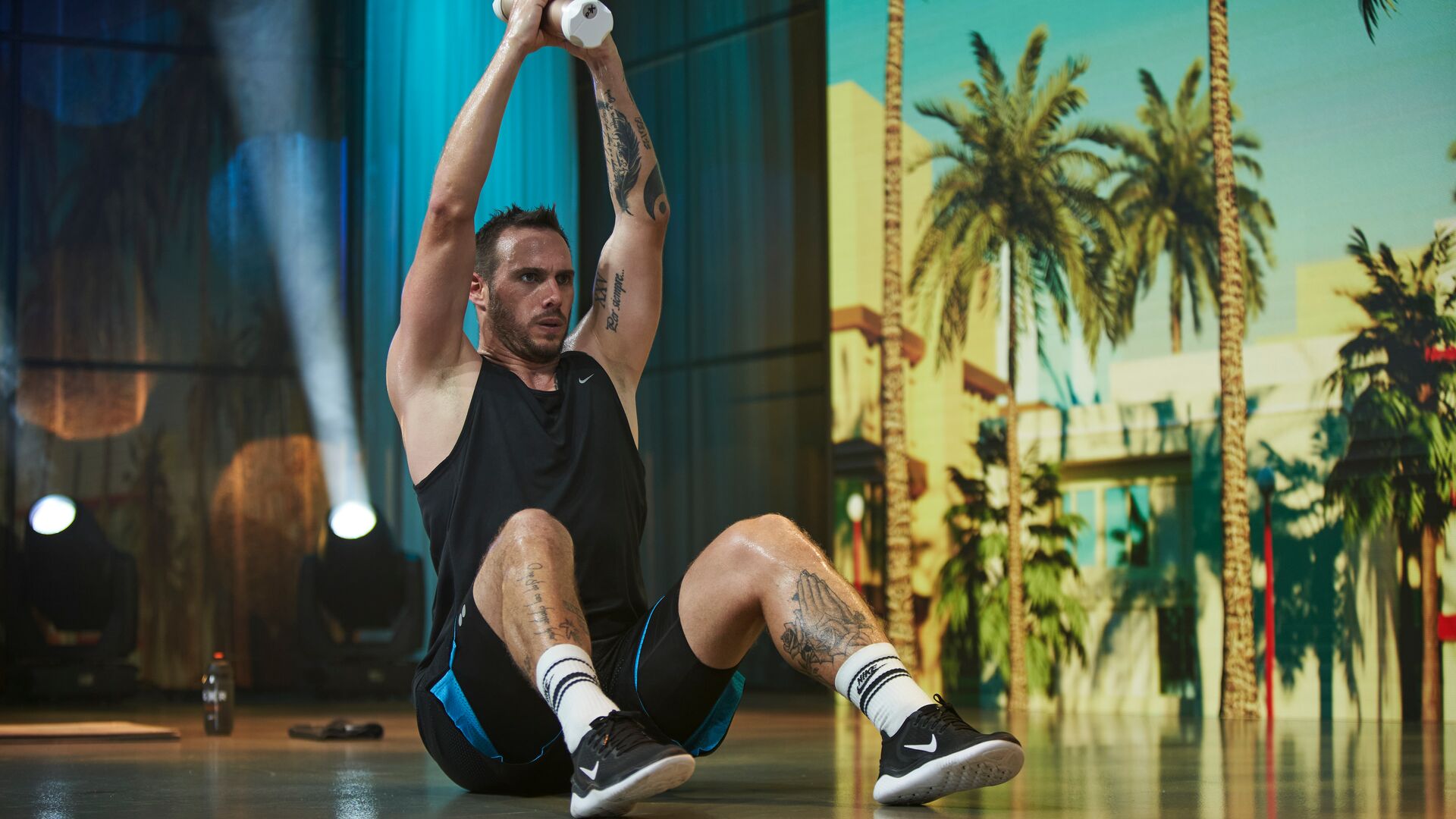
Core stability: your body's anchor
Your legs might do the heavy lifting, but your core is what keeps you steady. A strong core supports better posture, protects your lower back, and helps you move with control in every type of workout, including cycling.
Here's how to build that stability:
- Plank holds (30–60 seconds)
Rest on your forearms with elbows under shoulders, legs extended. Keep your body in a straight line and your core tight. Breathe through the hold and don’t let your hips drop.
- Bird dogs (3 x 10 per side)
Start on hands and knees. Extend your right arm and left leg at the same time, pause, then return and switch sides. Focus on moving slowly and keeping your hips stable.
- Side planks with leg lifts (3 x 8–10 per side)
Lie on one side, propped on your elbow. Lift your hips and extend your top leg. Slowly raise and lower the top leg without letting your body wobble.
Trainer tip: Quality matters more than quantity. Focus on control and breathing to get the most out of each rep.
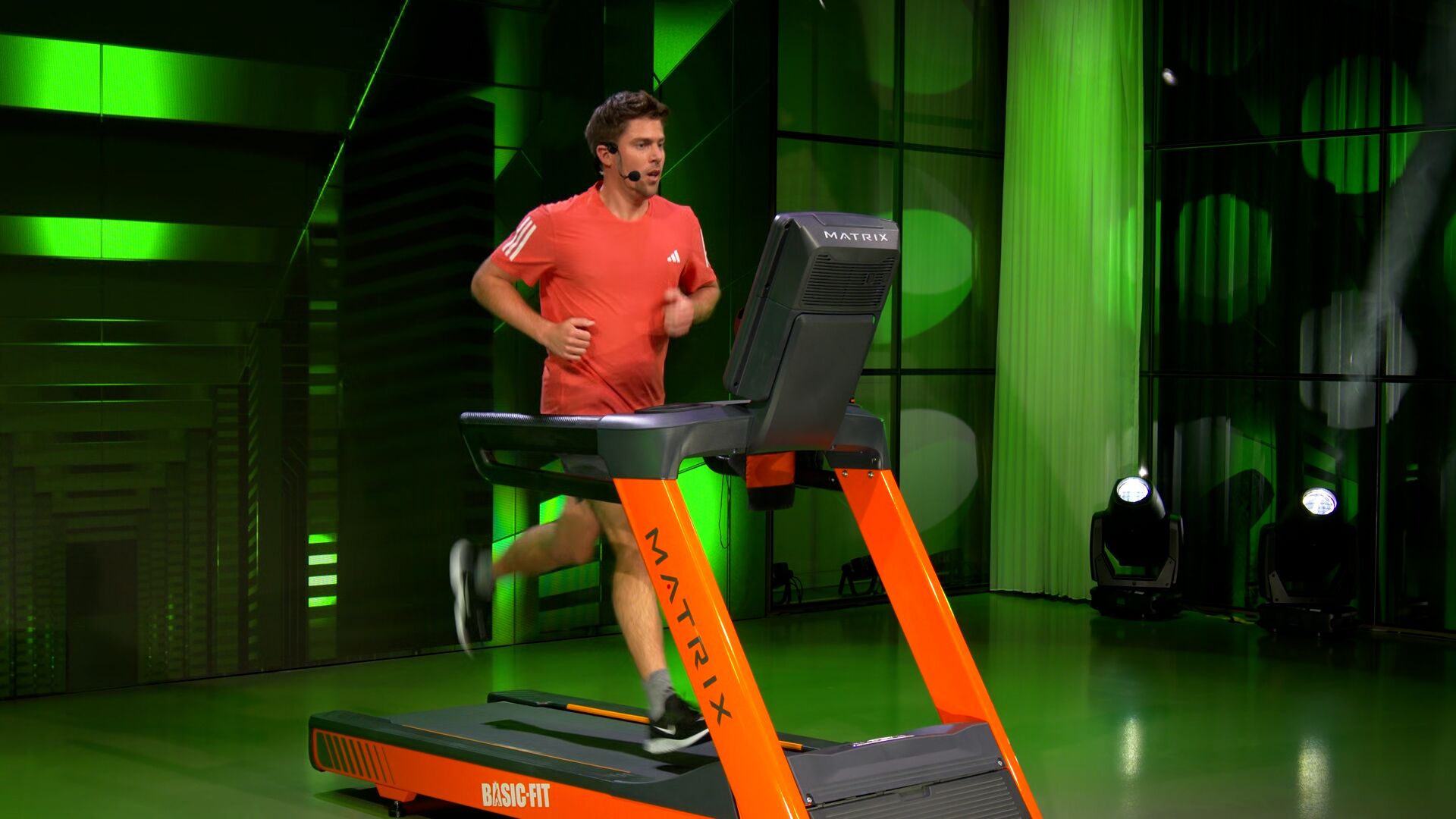
Endurance: build it like a pro
Endurance is built through consistent cardio training. Regular sessions help you go further, recover faster, and move with more confidence during workouts and everyday activities.
Here’s what that looks like in practice:
- Steady cardio (20–30 minutes, 3x/week)
Pick something that gets your heart rate up at a moderate pace. This could be brisk walking, cycling, running, rowing, or an elliptical session. You should feel slightly out of breath, but still able to hold a conversation.
- Add intervals (30 seconds fast, 90 seconds slow)
Alternate bursts of effort with recovery. You can jog for 90 seconds, then sprint for 30, or cycle at a steady pace and then increase your speed or resistance for short bursts. It also works on a rowing machine or elliptical. Intervals improve how your body handles intensity and recovers. Need guidance? You’ll find ready-to-go interval workouts in the Basic-Fit app.
Increase your time, resistance or speed little by little. Small adjustments lead to big progress.
Trainer tip: Not every session needs to be intense. Alternate intensity to avoid burnout and boost your progress.

Recovery is where progress happens
Recovery is when your body rebuilds muscle, restores energy, and resets mentally. Without it, your training can’t move forward, no matter how hard you work.
Build recovery into your week:
- Drink water before, during, after your workouts
- Stretch after training (quads, hips, calves)
- Foam roll sore areas
- Sleep 7–9 hours per night
Trainer tip: No rest means no progress. Plan your rest days the same way you plan your workouts.



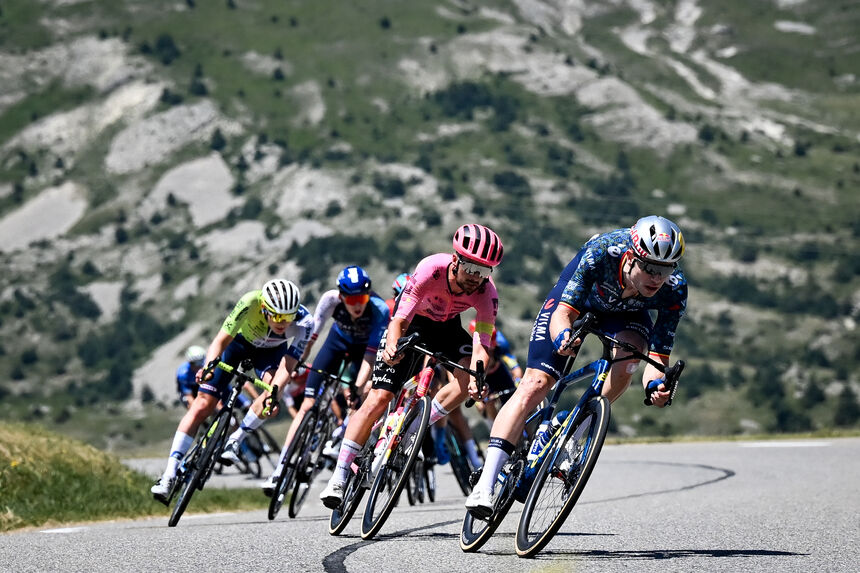




.jpg?sw=860)
